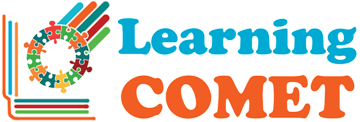
Achieving success: Eight factors for building collaborative teams
September 12, 2023
508 and WCAG: What’s the Difference?
October 3, 2023In today’s dynamic business landscape, the ability to effectively collaborate is key to executing complex initiatives. However, the very nature of large, diverse, and virtual teams can hinder collaboration, leading to inefficiencies and subpar results. To overcome these challenges, there are eight crucial success factors for building collaborative teams. These include fostering signature relationship practices, having role models of collaboration, promoting a gift culture, providing training in relationship skills, cultivating a sense of community, embracing ambidextrous leadership, leveraging heritage relationships, and ensuring role clarity and task ambiguity. By investing in these areas, organizations can unlock the true potential of their collaborative teams, building strong relationships and trust that will yield long-term success.

I. Introduction to Collaborative Teams
A. Importance of Building Collaborative Teams
Collaborative teams play a crucial role in executing complex initiatives. When individuals with diverse skills, knowledge, and perspectives come together to work towards a common goal, they can leverage their collective strengths and drive innovation. By fostering collaboration within teams, organizations can enhance problem-solving capabilities, increase efficiency, and achieve better results.
B. Challenges Faced by Large, Diverse, and Virtual Teams
While collaborative teams offer numerous benefits, they also face unique challenges. Large teams often struggle with coordination and communication due to the sheer number of members, making it difficult to align efforts and maintain a cohesive direction. Diverse teams may face conflicts arising from different perspectives and approaches to problem-solving. Virtual teams, on the other hand, experience the additional challenges of distance, time zones, and technological limitations, which can hinder effective collaboration.
C. Success Factors for Building Collaborative Teams
Building successful collaborative teams requires deliberate effort and attention to specific factors. Research has identified eight success factors for building collaborative teams:
-
Signature Relationship Practices: Teams that establish and maintain regular communication channels and foster strong relationships among team members have higher levels of collaboration and performance.
-
Role Models of Collaboration: Leaders who exhibit collaborative behaviors, set examples, and actively promote a collaborative culture within the team inspire others to engage in collaborative efforts.
-
A Gift Culture: Encouraging a culture of reciprocity, where team members are willing to share their knowledge and support others, fosters collaboration and creates a sense of community within the team.
-
Training in Relationship Skills: Providing training and development opportunities that focus on building interpersonal skills, effective communication, and conflict resolution can significantly enhance collaboration within teams.
-
A Sense of Community: When team members feel a sense of belonging and shared purpose, they tend to collaborate more effectively and are motivated to contribute to the team’s success.
-
Ambidextrous Leadership: Leaders who can balance the need for structure and direction while also empowering team members to take ownership and make decisions foster collaboration and create a dynamic team environment.
-
Good Use of Heritage Relationships: Leveraging existing relationships, networks, and connections can facilitate collaboration by tapping into collective knowledge and resources.
-
Role Clarity and Task Ambiguity: Clearly defining roles and responsibilities while allowing for some degree of task ambiguity enables team members to collaborate effectively and adapt to changing circumstances.
II. Role Clarity and Its Impact on Collaborative Teams
A. Definition and Importance of Role Clarity
Role clarity refers to the extent to which team members understand their roles, responsibilities, and the expectations placed upon them. It is vital for collaborative teams, as it establishes a clear framework for individuals to work together towards a common goal. When team members have a clear understanding of their roles, they can contribute effectively, avoid duplicating efforts, and collaborate with others in a coordinated manner.
B. The Role of Role Clarity in Fostering Collaboration
Role clarity plays a crucial role in fostering collaboration within teams. When team members know their responsibilities and understand how their roles align with others, they can collaborate more effectively. Clear roles create a sense of accountability, as team members are aware of their contributions and how they impact the overall team’s success. Role clarity also reduces conflicts and misunderstandings, as expectations are clearly defined, minimizing the likelihood of overlap or gaps in responsibilities.
C. Benefits of Role Clarity in Collaborative Teams
Role clarity in collaborative teams brings several benefits. It improves efficiency by reducing the time wasted on figuring out who is responsible for what and allows team members to focus on their assigned tasks. Moreover, role clarity enhances decision-making, as team members can consult the relevant individual or escalate issues to the appropriate authority. This clarity also promotes better communication within the team, facilitates knowledge sharing, and ultimately leads to improved team performance.

III. Task Ambiguity and Its Influence on Collaborative Teams
A. Understanding Task Ambiguity
Task ambiguity refers to the degree of uncertainty or lack of clarity surrounding a specific task or project objective. While role clarity involves understanding individual responsibilities, task ambiguity focuses on the openness and flexibility of tasks. In collaborative teams, it is essential to strike a balance between providing clarity in roles while allowing room for creativity, adaptation, and innovative problem-solving.
B. How Task Ambiguity Affects Collaboration
Task ambiguity can have both positive and negative effects on collaboration within teams. On one hand, a moderate level of task ambiguity can promote creativity, encourage diverse perspectives, and foster innovative solutions. When tasks are not overly prescriptive, team members have the freedom to explore various approaches, share ideas, and experiment with different methods. This flexibility stimulates collaboration and encourages individuals to contribute their unique skills and knowledge to the team.
On the other hand, excessive task ambiguity can lead to confusion, lack of direction, and decreased collaboration. When team members are unsure about their objectives or find it challenging to gauge the progress of their work, they may experience frustration or disengagement. This can hinder collaboration as individuals become hesitant to share their ideas and collaborate effectively.
C. The Advantages of Task Ambiguity in Collaborative Teams
When managed appropriately, task ambiguity can bring several advantages to collaborative teams. It encourages adaptability and agility, allowing teams to respond effectively to changing circumstances or unforeseen challenges. Task ambiguity also promotes learning and experimentation, as team members are encouraged to think outside the box and explore new approaches. This flexibility in task design can lead to increased innovation, as individuals are empowered to take risks, share diverse viewpoints, and collaborate on creative solutions.
IV. The Interplay Between Role Clarity and Task Ambiguity
A. Exploring the Relationship Between Role Clarity and Task Ambiguity
Role clarity and task ambiguity are closely interlinked in collaborative teams. While role clarity provides individuals with a clear understanding of their responsibilities, task ambiguity introduces some level of openness and flexibility in how those responsibilities are fulfilled. It is crucial to strike a balance between the two, as excessive role clarity combined with low task ambiguity may result in rigid structures and limited creativity, while high task ambiguity without role clarity can lead to confusion and lack of accountability.
B. Balancing Role Clarity and Task Ambiguity in Collaborative Teams
Finding the right balance between role clarity and task ambiguity requires thoughtful consideration and adaptability. Organizations need to ensure that roles are clearly defined and communicated, providing individuals with a sense of purpose and direction. Simultaneously, teams must embrace a certain level of task ambiguity to allow for creativity, flexibility, and innovation. Effective leaders play a crucial role in balancing role clarity and task ambiguity by guiding team members, facilitating collaboration, and setting the appropriate level of flexibility in task design.
C. Strategies for Optimizing Role Clarity and Task Ambiguity
To optimize role clarity and task ambiguity in collaborative teams, organizations can implement several strategies:
-
Continuous Communication: Establishing clear channels of communication within the team, encouraging regular updates, and fostering a culture of open dialogue can improve role clarity and provide opportunities to clarify task ambiguity.
-
Collaborative Goal Setting: Involving team members in goal-setting processes allows for collective ownership and ensures that roles and responsibilities are aligned with the team’s objectives.
-
Encouraging Creativity and Experimentation: Creating a supportive environment where team members are encouraged to think outside the box, share ideas, and experiment with different approaches can enhance task ambiguity while maintaining a clear understanding of individual roles.
-
Providing Training and Development: Offering training programs that focus on enhancing problem-solving skills, critical thinking, and adaptability can equip team members with the necessary tools to navigate task ambiguity successfully.
-
Regular Performance Feedback: Providing regular feedback on individual and team performance helps clarify expectations, reinforces role clarity, and ensures that team members understand how their contributions impact the overall team’s success.

V. Unlocking the Potential of Collaborative Teams
A. Creating a Culture of Role Clarity and Task Ambiguity
Unlocking the potential of collaborative teams requires creating a culture that values both role clarity and task ambiguity. Organizations can foster this culture by:
-
Leading by Example: Leadership should demonstrate collaborative behaviors, establish clear roles, and allow for flexibility and experimentation.
-
Establishing Team Norms: Collaboratively establishing norms and expectations that promote role clarity while embracing task ambiguity can create a shared understanding within the team.
-
Encouraging Psychological Safety: Creating an environment where team members feel safe to express their opinions, take risks, and learn from failures is crucial for fostering collaboration and innovation.
B. Enhancing Communication and Coordination Within Collaborative Teams
Effective communication and coordination are vital for collaborative teams to work cohesively towards their goals. Organizations can enhance communication and coordination by:
-
Utilizing Technology: Leveraging collaboration tools and platforms that facilitate real-time communication, file-sharing, and collaboration can bridge the gap for virtual teams and improve coordination.
-
Encouraging Regular Check-Ins: Scheduling regular team meetings, both virtual and in-person, helps maintain open lines of communication, provides an opportunity to address challenges, and promotes collaboration.
-
Establishing Clear Decision-making Processes: Clearly defining decision-making processes and ensuring that team members understand their roles in the decision-making framework can streamline collaboration and prevent conflicts.
C. Developing Effective Leadership Practices for Role Clarity and Task Ambiguity
Leaders play a vital role in fostering collaboration and optimizing role clarity and task ambiguity. They can develop effective leadership practices by:
-
Investing in Leadership Development: Providing leadership development programs that focus on building collaboration skills, fostering inclusive leadership, and creating an environment that embraces both role clarity and task ambiguity can enhance leadership effectiveness.
-
Empowering Team Members: Encouraging leaders to empower team members by involving them in decision-making, delegating responsibilities, and promoting autonomy fosters collaboration and develops a sense of ownership.
-
Promoting Mentoring and Coaching: Establishing mentoring and coaching programs where experienced team members guide and support their colleagues can enhance role clarity and provide the necessary guidance to navigate task ambiguity effectively.
VI. Long-term Investments in Relationships and Trust
A. The Importance of Relationships and Trust in Collaborative Teams
In collaborative teams, relationships and trust serve as the foundation for effective collaboration. Long-term investments in building relationships and trust contribute to:
-
Open Communication: Trust allows team members to communicate openly, exchange ideas freely, and provide constructive feedback without fear of judgment or reprisals.
-
Effective Conflict Resolution: Trust enables team members to engage in constructive conflict resolution, address disagreements, and find mutually beneficial solutions.
-
Information Sharing: Trustworthiness between team members promotes information sharing, knowledge transfer, and collaboration, ultimately leading to improved team performance.
B. Building and Maintaining Relationships Within Collaborative Teams
To build and maintain relationships within collaborative teams, organizations can focus on the following strategies:
-
Team Building Activities: Organizing team-building activities, both virtual and in-person, promotes bonding, enhances trust, and fosters relationship building.
-
Encouraging Collaboration Outside of Work: Encouraging informal interactions, such as social events or virtual networking platforms, creates opportunities for team members to connect on a personal level, strengthening relationships.
-
Appreciating Diversity: Valuing and embracing diverse perspectives, cultures, and backgrounds within the team creates an inclusive environment that fosters collaboration and trust.
C. Strategies for Fostering Trust in Complex Teams
Building trust within complex teams requires deliberate effort and the following strategies:
-
Transparent Communication: Ensuring transparent and consistent communication, providing updates on project progress, and addressing concerns openly promotes trust among team members.
-
Accountability and Reliability: Encouraging accountability for actions and delivering on commitments demonstrates reliability, leading to increased trust within the team.
-
Recognition and Appreciation: Recognizing team members’ contributions, providing positive feedback, and showing appreciation for their efforts strengthens trust by acknowledging their value and efforts.

VII. Conclusion
A. Recap of the Importance of Role Clarity and Task Ambiguity in Collaborative Teams
Role clarity and task ambiguity are crucial factors that significantly impact the success of collaborative teams. Role clarity provides team members with a clear understanding of their responsibilities and promotes effective collaboration, while task ambiguity allows for flexibility, innovation, and adaptability. Finding the right balance between the two is key to unlocking the potential of collaborative teams.
B. Key Takeaways for Unlocking the Potential of Collaborative Teams
To unlock the potential of collaborative teams, organizations should emphasize the importance of role clarity and task ambiguity. Implementing strategies such as clear communication, effective leadership practices, fostering relationships and trust, and creating a culture that values both clarity and ambiguity can enhance collaboration, drive innovation, and achieve better results. By prioritizing these factors, organizations can foster productive and successful collaborative teams.

